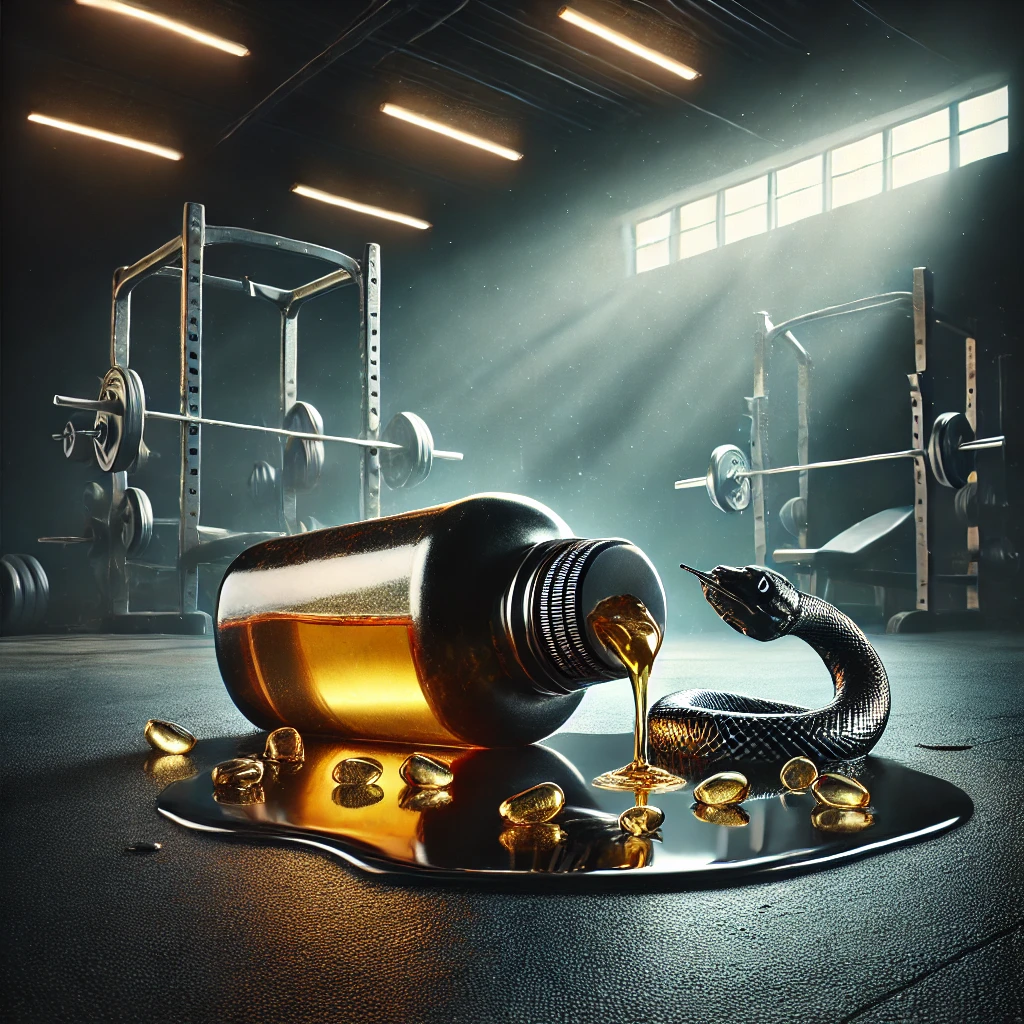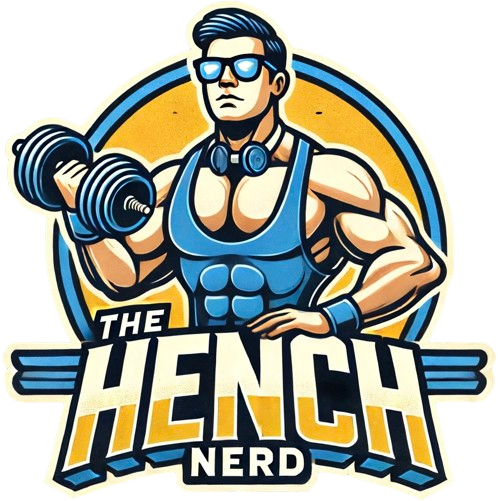I’ve written fairly extensively on all things testosterone within this health and hormone section. As usual, I will link you to relevant useful articles throughout this blog post. Welcome to a long and thorough post on how to avoid TRT and real tips to boost testosterone.
Struggling with low testosterone and thinking about TRT? Hold fire. Testosterone Replacement Therapy (TRT) is booming, but too many men jump on it without tackling the real issue—lifestyle. The truth? In most cases, you don’t need TRT. Your body already knows how to produce testosterone; you just need to give it the right conditions to thrive. In this guide, you’ll discover how to avoid TRT with proven, science-backed strategies to naturally restore your testosterone levels—without risky injections or long-term dependence
TRT (testosterone replacement therapy) is becoming increasingly popular with men over 35 and worryingly so. Younger men are feeling the need to ‘ hop on T’ thinking that exogenous testosterone at therapeutic doses (let’s not kid ourselves, these doses are often mild steroid cycles and not administered as therapeutic TRT doses) is the answer to every woe known to man.
As I’ve explained countless times, type two/ secondary hypogonadism (your balls produce testosterone, just not at optimal amounts) is more often or not down to lifestyle issues. Fix these and watch your testosterone bounce back.
Testosterone is a hormone of vitality. If you’re treating your body like crap, why on earth would you expect it to produce optimal male hormone levels? Your body is surviving and not thriving.
Before we get stuck in, I’d like to make one thing clear. I’m not anti TRT. I marvel at modern day medicine and the improvements made to peoples lives. What I’m against is men hopping on who have yet to properly address a natural testosterone fix (the long term impact of TRT is yet to be discovered). Follow these tips and I can almost guarantee that you’ll notice an improvement and learn how to avoid TRT with these tips to boost testosterone.
1. Fix Micronutrient Deficiencies
When it comes to maintaining healthy testosterone levels, micronutrients are non-negotiable. These tiny, often-overlooked nutrients can have a massive impact on your hormones. A deficiency in key vitamins and minerals won’t just make you feel sluggish—it might directly sabotage your testosterone production. Let’s look at which micronutrients matter most and how they can boost your testosterone without resorting to TRT.
Micronutrients That Raise Testosterone
Certain micronutrients play a starring role in testosterone production, acting almost like fuel for your hormonal engine. Here’s a breakdown of the most important ones:
- Vitamin D: Known as the “sunshine vitamin,” vitamin D is actually a hormone precursor that directly impacts testosterone levels. Studies suggest men with low vitamin D often have lower testosterone. Spending 15–30 minutes in the sun and eating vitamin D-rich foods, like fatty fish or egg yolks, can make a real difference.
- Magnesium: This mineral combats oxidative stress, which can impair testosterone production. Foods like dark leafy greens, nuts, and whole grains are magnesium gold mines. Bonus: magnesium is also great for muscle recovery after a workout.
- Zinc: Think of zinc as your testosterone’s bodyguard. A deficiency here can quickly lead to suppressed levels, but the good news is that zinc is found in abundant sources like shellfish (hello, oysters), seeds, and beef.
- Boron: Although less talked about, boron helps regulate testosterone metabolism. It’s found in foods like avocados and nuts. However, it’s still somewhat under-researched, so don’t bet the farm on boron supplements just yet.
- Selenium: This mineral has been shown to enhance testosterone production in small studies. Foods like Brazil nuts and eggs are packed with selenium, but don’t go overboard—more isn’t always better.
- Antioxidants (like flavonoids): Found in colourful foods like berries, pomegranates, and cocoa, antioxidants protect the cells that produce your testosterone.
While hitting your micronutrient targets might not feel as dramatic as taking a magic testosterone pill, it’s one of the most sustainable ways to optimise your health. you’d be surprised at how optimal micronutrients can be a key factor in answering how to avoid TRT.
2. Achieve Optimal Body Fat Levels For High Testosterone
When it comes to maintaining peak testosterone levels, your body fat percentage matters big time. Carrying too much or too little fat can throw your hormones into disarray, creating a hormonal rollercoaster you definitely want to avoid. Let’s break it down and see why striking the right balance with your body fat isn’t just about aesthetics—it’s about keeping your testosterone where it should be.
How To Lose Body Fat For Higher Testosterone
Too much body fat, particularly around the belly, is more than just a nuisance—it’s a direct threat to your testosterone. Fat cells house an enzyme called aromatase, which has a nasty habit of converting testosterone into estrogen.
Luckily for you, I’ve written many articles on losing body fat the right way and ensuring you’re preserving testosterone as much as possible.
The Impact Of Too Little Body Fat On Testosterone
But what happens if you go too far? While excess fat is a testosterone killer, having too little body fat is equally problematic. Extremely low body fat levels—often associated with intense dieting or extreme endurance sports—can suppress testosterone to dangerously low levels. In men, body fat percentages dipping below 8% can start veering into “castration territory,” where your body struggles to produce enough testosterone to keep things running smoothly. Think about it….. your body thinks it’s starving to death. Why would it produce testosterone in abundance?
So, how do you find the sweet spot? For most men, aiming for a body fat range between 12-17% is ideal for supporting testosterone while staying fit and healthy.
The takeaway? Losing fat with a balanced, thoughtful approach is key for boosting testosterone, while excessive extremes—whether too high or too low—can wreak havoc on your hormones. Achieve balance, and your body will reward you with higher energy, improved mood, and the testosterone boost you’re aiming for.
3. Proper Macronutrient Split For High Testosterone

When it comes to testosterone support, eating the right balance of macronutrients is a critical step. Each of the three macros—fat, protein, and carbs—plays a distinct role in either stimulating or sustaining optimal hormone levels. Testosterone production isn’t just about hitting the weights or taking supplements; your diet is the unsung hero. So, let’s break it down and highlight how a smart macro split gives your testosterone the green light.
Don’t Fear Saturated Fat For Increased Testosterone
Fat has long been blamed as public enemy number one in the nutrition world, largely thanks to the work of Ancel Keys in the mid-20th century. His hypothesis linking saturated fat to heart disease shaped generations of food guidelines, but the truth? He cherry-picked data. No, really—some of the healthiest populations in the world, like the Maasai and Tokelauans, thrive with high saturated fat diets.
And here’s the deal: saturated fat isn’t something to fear, especially if you want high testosterone. Testosterone, a steroid hormone, originates from cholesterol. You heard that right—fat and cholesterol are essential building blocks of testosterone. Diets low in fat, particularly saturated fat, have been shown to reduce testosterone levels. Foods like beef, eggs (yes, the yolks too), and butter can be your allies here.
So, how does it work? Think of saturated fats as fuel for your body’s hormone factory. They boost the production of luteinising hormone (LH)—the chemical messenger that tells your body to produce testosterone. Aim for 20-35% of your daily calories from fats, with a solid chunk of this coming from high-quality saturated sources.
But balance is key. Combine saturated fat with other healthy fat types, like monounsaturated fats from avocados or olive oil, to avoid overdoing it. Eating that block of butter isn’t going to turn you into a testosterone beast.
Is Sugar Reducing Testosterone?
Sugar might taste sweet, but for your testosterone, it’s serving up a sour deal. Research shows that excessive refined carbohydrate intake, especially sugar-sweetened beverages, leads to insulin spikes and increases fat storage—both of which spell doom for testosterone. In fact, consuming 75 grams of sugar (roughly equal to a large soda) can drop testosterone by up to 25% for several hours. Yup, just one sugary indulgence can put your hormones in slow motion.
Why does this happen? Sugar raises insulin levels, which in turn promotes the activity of aromatase—an enzyme that transforms your hard-earned testosterone into estrogen. Essentially, sugar not only suppresses testosterone production but also actively works against it.
Swap out refined sugars for complex carbohydrates. Whole grains, vegetables, and legumes offer the energy you need without the hormonal backlash. Keep the refined carbs and sugary snacks as an occasional treat, not a daily habit, if you’re serious about optimising testosterone.
Protein and Testosterone
Protein is a nutritional powerhouse—essential for muscle building, repair, and recovery. Without enough protein, your gym efforts and hard-earned gains could go to waste. But when it comes to testosterone, too much of a good thing can be problematic.
Studies show that very high protein intake (greater than 3.4 grams per kilogram of bodyweight daily) can suppress testosterone. This happens because excessive protein may push your body into overdrive in metabolising nitrogen, ramping up stress hormones like cortisol, which can counteract testosterone. Plus, a lack of dietary fat when prioritising high protein can exacerbate this hormonal imbalance.
The goal? Find the sweet spot. For most men, 1.6 to 2.2 grams of protein per kilogram of bodyweight strikes the perfect balance. This level is enough to support muscle growth and maintenance without stealing from your testosterone stash. Choose high-quality protein sources, like lean meats, fish, eggs, and plant-based options like beans or tofu.
Remember, protein is your partner in crime for sculpting muscle, but don’t ignore the fats and carbs needed to keep testosterone firing on all cylinders. The right macro balance can turn your nutrition into a testosterone-boosting machine.
4. Avoiding Environmental Toxins
Environmental toxins, especially those that disrupt hormones, can throw your body’s natural balance completely out of sync. From plastics to skincare products, it feels like dodging traps in an obstacle course. But fear not—there are practical ways to minimise exposure to these harmful chemicals that can wreak havoc on your testosterone levels and overall health.
Reducing Exposure to Endocrine Disruptors

Endocrine-disrupting chemicals (EDCs) are everywhere. They’re like the villains of the chemical world, sneaking into your food, water, and even the air you breathe. These compounds mimic or interfere with hormones, which can lead to reduced testosterone production and other health issues. Common culprits include:
- BPA and BPS: Found in plastic bottles, food containers, and receipts. Opt for glass or stainless steel alternatives and say no to printed receipts whenever possible.
- Phthalates: Found in plastics, vinyl, and fragranced products like air fresheners. Avoid soft plastics and use fragrance-free options.
- Pesticides: Lurking on non-organic fruits and vegetables. Whenever possible, choose organic produce or wash thoroughly with a baking soda solution.
- PFAS (Per- and polyfluoroalkyl substances): Present in non-stick cookware and water-resistant materials. Stick to cast iron or stainless steel for cooking.
Making smarter, seemingly small choices can limit how much of these disruptors enter your daily life. For example, switching from canned foods to fresh alternatives is like trading fast food for homemade meals—it’s worth the effort.
Tips for reducing exposure:
- Swap out single-use plastic bottles for reusable glass or metal containers.
- Choose fresh or frozen produce over canned. If you must go canned, look for “BPA-free” labelling.
- Avoid microwaving food in plastic containers—it’s like sending an invitation for toxins to leach into your meals.
Small steps, big impact. The less you rely on plastics and artificial chemicals, the more you protect your hormones.
Choosing Safe Personal Care Products
Personal care products—your go-to lotions, shampoos, and deodorants—can be sneaky sources of toxins. Many contain endocrine disruptors that sneak into your system through your skin. Sounds unfair, right? Luckily, there are hormone-safe options out there.
Here’s what to look out for:
- Fragrance: That “refreshing ocean breeze” scent might actually be a cocktail of phthalates. Look for products labelled “unscented” or “fragrance-free.”
- Parabens: Preservatives found in everything from moisturisers to makeup. Choose paraben-free alternatives to cut down your exposure.
- Triclosan: A chemical in antibacterial soaps that’s best left on the shelf. It can mess with your hormones and isn’t necessary for cleanliness. Stick to simple, soap-based hand washes.
Instead of focusing on all the things to avoid, think about what’s worth embracing:
- Natural Oils: Ingredients like coconut oil, shea butter, and almond oil are like the superheroes of skincare—effective, safe, and toxin-free.
- Minimal Ingredients: When in doubt, less is more. A short, clear ingredient list is usually a good sign.
- Eco-friendly Packaging: Many hormone-safe brands also use sustainable packaging, which is a nice two-for-one win.
If you’re feeling overwhelmed, apps like “Think Dirty” or “EWG’s Skin Deep Database” can help you scan products for potential hazards. It’s like having a personal health detective in your pocket.
Switching to hormone-safe personal care products doesn’t have to be expensive or complicated. When you think about it, isn’t it worth investing in products that make you healthier? Besides, your skin and hormones will thank you.
5. Sleeping for Increased Testosterone

Sleep isn’t just about recharging your batteries—it’s a core pillar of hormone health, and testosterone is no exception. Poor sleep can tank your testosterone levels, undoing all your hard work in the gym, the kitchen, and even the bedroom. During sleep, your body enters repair mode, with testosterone production peaking during the deeper stages of rest. Skimping on sleep disrupts this process, leaving your hormone levels stranded in the slow lane. So, how can you snooze your way to better testosterone levels?
How To Avoid TRT and Get a Better Night’s Sleep
Getting quality sleep is easier said than done, but even small improvements can make a world of difference. Here are a few strategies to optimise your shut-eye for better testosterone production:
- Stick to a Routine: Going to bed and waking up at the same time every day—even on weekends—helps sync your internal clock. A consistent schedule trains your body to fall asleep faster and enjoy deeper, uninterrupted sleep.
- Create a Sleep Sanctuary: Keep your bedroom dark, quiet, and cool—think of it as a cave. Invest in blackout curtains, use a white noise machine if needed, and set the thermostat to a comfortable 18-22°C. Make your bed a phone-free zone to minimise distractions.
- Limit Blue Light in the Evenings: Blue light from phones, tablets, and even energy-efficient light bulbs can interfere with melatonin production, the hormone responsible for sleep. Consider dimming the lights and swapping screen time for reading or relaxation in the hours leading up to bedtime.
- Avoid Heavy Meals and Caffeine Late in the Day: While a post-lunch coffee might give you a boost, drinking caffeine after 3 PM can sabotage your sleep. Similarly, eating large meals close to bedtime forces your body to focus on digestion, making it harder to drift off.
- Wind Down with a Bedtime Routine: A calming pre-sleep routine signals your brain that it’s time to relax. Whether it’s meditating, stretching, or listening to calming music, a regular routine can do wonders for falling asleep faster.
- Skip the Snooze Button Cycle: Hitting snooze repeatedly disrupts your natural sleep cycles and leaves you groggier. Set your alarm for the actual time you need to wake up and get out of bed when it rings.
Next time you’re tempted to stay up late, remind yourself: every hour of sleep lost is testosterone you’re giving away.
6. Stress and Testosterone
Stress is a silent saboteur when it comes to your testosterone levels. When life throws too much at you—whether it’s work deadlines, financial worries, or relationship struggles—your body reacts by releasing cortisol, the stress hormone. While this is helpful during an emergency, chronic stress is an entirely different story. Elevated cortisol doesn’t just put you in a bad mood; it’s like a wave crashing over your testosterone, washing it away bit by bit. Let’s explore how reducing stress can help you safeguard this vital hormone.
How To Avoid TRT and Reduce Stress

Stress management isn’t just about meditating on a mountaintop or pretending life’s pressures don’t exist. It’s about equipping yourself with practical tools and habits to keep cortisol in check and testosterone levels thriving. Here’s how:
- Prioritise Sleep Quality: Poor sleep feeds stress, which feeds poor testosterone production—it’s a vicious cycle. Aim for 7–9 hours of good-quality sleep each night to allow your body to rest and repair.
- Exercise Regularly (but Avoid Overdoing It): Physical activity, especially strength training and moderate cardio, is a fantastic stress buster. Just don’t push yourself to the point of exhaustion—overtraining can raise cortisol levels and harm your hormones.
- Try Relaxation Techniques: Activities like yoga, deep breathing exercises, or even a 10-minute mindfulness app session can work wonders. Think of it as a reset button when your stress starts to boil over.
- Connect with Others: Humans are social creatures, and a solid support system can help keep your mental health—and testosterone—in balance. Whether it’s calling a friend or spending quality time with loved ones, meaningful connections reduce stress.
- Limit “Stress Triggers”: If possible, cut back on caffeine, reduce screen time before bed, and avoid unnecessary sources of anxiety like doom-scrolling on social media or bingeing the news before you sleep.
- Fuel Your Body Right: A balanced diet rich in stress-fighting nutrients like magnesium (found in nuts and leafy greens) or vitamin D can help support your body’s natural stress response and testosterone production.
Think of cortisol and testosterone like opposing forces. When you lower stress, you leave more room for testosterone to flourish. It’s not about making life perfect but learning to handle what comes your way with resilience and smart habits. How to avoid TRT? Keep the stress low.
7. Strength Train to Naturally Boost Testosterone

When it comes to increasing testosterone naturally, strength training is one of the most reliable tools at your disposal. Think of it as signalling your body to produce more of the hormone responsible for muscle mass, energy, and vitality. But how do you make the most of it? The key lies in structuring your routine for maximum results.
How to Effectively Strength Train For Increased Testosterone
To optimise testosterone production, your strength training programme needs to be dialled in with the right exercises, intensity, and frequency. Here’s the lowdown:
- Focus on Compound Movements: Make exercises like squats, deadlifts, bench presses, and pull-ups your bread and butter. These moves recruit multiple muscle groups and demand more from your body, triggering a greater testosterone response.
- Lift Heavy: For testosterone-boosting results, aim to lift weights that challenge you in the 6–12 rep range. The idea is to push your muscles to adapt while keeping the workout intense but manageable.
- Keep It Intense and Short: Testosterone levels peak during workouts that are high-intensity but not overly long. Aim for sessions lasting between 45 minutes to an hour. Anything longer can doom you to elevated cortisol levels, which counteracts testosterone production.
- Rest Intelligently: Give your muscles time to recover with 48-72 hours between training the same muscle group. Overtraining can literally sap your testosterone levels. Take at least one full rest day per week to prioritise recovery.
You’ll find many weight training programs in my strength training category.
Consistency is more important than an ultra-complex programme. Show up regularly, lift progressively heavier weights, and balance your workouts with recovery.
Testosterone works like a reward for effort. Push yourself during intense, well-structured sessions, and your body will pay it forward with increased testosterone. It’s a balance of hard work, rest, and smart choices. And let’s face it—who doesn’t want to look in the mirror and see results?
8. The Role of Cardio to Increase Testosterone
Cardio may not be the first thing that comes to mind when thinking about testosterone, but it does have a role to play—if done right. While resistance training often steals the spotlight for boosting testosterone, cardio can support hormonal health indirectly. The key is knowing how to balance it. Let’s explore how cardio affects testosterone and how to avoid the pitfalls of doing too much.
How Chronic Cardio Reduces Testosterone
Ever heard the saying, “too much of a good thing”? Chronic cardio is a perfect example. Activities like long-distance running or endless hours of cycling can stress the body, raise cortisol levels (the stress hormone), and ultimately harm testosterone production. Think of it as your body being in survival mode—it adapts to endurance demands by prioritising other processes and putting testosterone production on the back burner.
Why does this happen? Prolonged, steady-state cardio increases cortisol to fuel endurance efforts. Cortisol isn’t all bad—it’s useful in short bursts—but when elevated for too long, it competes with testosterone for resources. Plus, the caloric burn from long cardio sessions can lead to muscle wasting if not carefully managed, further decreasing testosterone support.
Symptoms of too much cardio might include:
- Constant fatigue or “hitting a wall” mid-workout.
- Trouble building or maintaining muscle.
- A general feeling of being run-down.
While cardio has its benefits, excessive amounts can turn your testosterone into an afterthought.
The Optimal Cardio Levels for Healthy Testosterone
Moderation is the magic word when it comes to cardio. The goal should be to keep your heart healthy, manage weight, and stay energised—without tipping the scales into overtraining.
So, how much cardio should you aim for? A good rule of thumb is:
- Stick to 2–3 sessions per week of moderate cardio, lasting about 30–45 minutes each.
- Replace some steady-state cardio with high-intensity interval training (HIIT) if you’re pressed for time or want better results. HIIT combines short bursts of intense activity with recovery periods, making it efficient for fat loss and muscle preservation without the hormonal downsides of excessive cardio.
For example, a HIIT routine might include:
- 30 seconds of maximum effort (sprints, battle ropes, or burpees).
- 60 seconds of light activity or rest.
- Repeat 6–8 times.
Incorporating cardio this way allows you to burn fat and improve cardiovascular health—a win-win for testosterone. Plus, losing excess body fat helps reduce the aromatase enzyme, which turns testosterone into estrogen.
Remember, cardio shouldn’t overshadow resistance training. If your goal is optimising testosterone, strength workouts should still be the foundation of your fitness routine, with cardio playing a supporting role. Keep things balanced, and your testosterone levels will thank you.
9. Supplementation For Increased Testosterone
When it comes to increasing testosterone, supplementation often enters the conversation. It’s tempting, isn’t it? A few capsules a day to reverse fatigue, pump up your libido, and support gains in the gym. But not all supplements deliver what they promise—some are backed by research, while others are nothing more than expensive placebos. Let’s explore what works and what doesn’t.
2 Supplements That may Increase testosterone
Fadogia agrestis and Tongkat Ali are two natural supplements that have gained attention, particularly due to neuroscientist Andrew Huberman, who has discussed their potential to boost testosterone levels.
Tongkat Ali has been shown to improve free testosterone by reducing cortisol, while Fadogia agrestis is thought to increase testicular output of testosterone. Huberman has suggested dosages of around 200–600mg daily for Tongkat Ali and 425–600mg for Fadogia agrestis, though individual tolerance varies.
However, no supplement is a magic fix—if your diet, sleep, and training are lacking, these won’t make a meaningful difference. Testosterone optimisation is a holistic process, and while these supplements may provide a modest boost, they won’t counteract poor lifestyle choices.
Snake Oil Supplements To Increase Testosterone

Let’s get this out of the way: the supplement market isn’t exactly squeaky clean. Scammers and marketers prey on insecurities, pushing products touted as “testosterone boosters” with little to no evidence. Don’t fall for the hype.
Here’s a list of popular supplements that often lack the science to back their bold claims:
- Tribulus Terrestris: Marketed as a testosterone booster, tribulus terrestris is better known for minor libido improvements than for raising actual testosterone levels. Research shows little to no impact on testosterone in most study populations.
- DHEA (Dehydroepiandrosterone): While DHEA is a precursor hormone that your body uses to produce testosterone, taking it as a supplement hasn’t consistently been shown to boost testosterone in men under normal circumstances.
- Horny Goat Weed (Epimedium): At best, this one might mildly improve erectile function in specific cases, but it’s not a testosterone booster.
- Maca Root: Often believed to enhance libido, maca hasn’t been shown to directly increase testosterone levels.
- Saw Palmetto: While saw palmetto may support prostate health, it does not appear to increase testosterone.
What do these supplements have in common? Many promise the world but fail to deliver measurable results in clinical trials. They might enrich your bathroom counter collection, but they’re unlikely to move the needle on your testosterone levels. And even if a product claims to contain active ingredients, poor regulation of the supplement industry means what’s on the label might not represent what’s in the bottle. Testing and standardisation are rarely as rigorous as we’d like.
Here’s the takeaway: If a supplement sounds too good to be true, it probably is. Instead of relying on magic pills, focus on a scientifically validated approach to boosting your testosterone naturally. How to avoid TRT? Keep vigilant for snake oil scams…….
10. How To Avoid TRT With Mindset
Boosting testosterone isn’t just about exercise and diet—it starts with your mindset. The way you approach life, handle challenges, and manage stress can all affect testosterone production. Your brain and body are a team, working in sync. If your mind is out of balance, your hormones might be too. Let’s explore how the right mindset can set the stage for natural testosterone optimisation.
Positive Thinking and Confidence
Believe it or not, your attitude can influence your hormones. Feeling confident and thinking positively aren’t just “feel-good” habits—they might actually help raise testosterone levels. Studies have shown that winning a competition or even visualising success can give you a brief hormonal boost. It’s like your brain signalling your body to get ready for action.
How can you cultivate this mindset? Start small:
- Practice Positive Self-Talk: Replace “I can’t” with “I’ll try.” This simple shift can build confidence over time.
- Celebrate Small Wins: Whether it’s hitting a fitness goal or finishing a task early, acknowledging your achievements reinforces success.
- Avoid Negative Influences: Limit time with people or activities that drain your energy or make you doubt yourself.
Think of confidence as your internal thermostat. When you turn it up, it encourages your body to perform better—mentally, physically, and yes, hormonally.
The Role of Purpose and Connection
Humans thrive on purpose and connection. When you feel a sense of fulfilment or support from others, it contributes to overall well-being—which includes hormonal health. Social bonds and meaningful work can actually help lower stress and keep testosterone production steady.
Here’s how to harness the power of connection:
- Spend Time with Supportive People: Whether it’s family, friends, or a community group, meaningful connections can lower stress.
- Engage in Activities You Love: Hobbies and passions give life purpose and reduce the grind of daily stress.
- Avoid Isolation: Even when life gets busy, make time for social interaction. It’s as important to your mental health as a good diet is to your physical health.
Think of purpose as the fuel and connection as the spark that keeps you mentally energised. Together, they create the perfect hormonal environment for testosterone production.
The Power of a Growth Mindset
Having a fixed mindset—thinking that your abilities can’t change—can stifle progress. A growth mindset, on the other hand, keeps you open to learning, improving, and adapting. This isn’t just motivational fluff; it’s a practical way to approach challenges, including improving your health and testosterone levels.
Adopt a growth mindset with these steps:
- See Setbacks as Learning Opportunities: Missed a workout? Ate too much junk food? Instead of beating yourself up, focus on what you’ll do differently next time.
- Seek Knowledge: Whether it’s reading articles, listening to podcasts, or asking experts, learning builds confidence and momentum.
- Focus on Effort, Not Just Results: Consistent effort leads to long-term success. As the saying goes, “progress, not perfection.”
Imagine you’re planting seeds. Step by step, with the right mindset, you’re nurturing a healthier hormonal garden. A growth mindset ensures no effort is wasted.
The takeaway? Mindset is more than mental—it’s hormonal. Taking control of your thoughts, reducing stress, and embracing confidence can help create the ideal conditions for your body to thrive, including higher testosterone levels.
Conclusion
Maintaining testosterone levels naturally is more than just avoiding TRT—it’s about building a foundation for better health and vitality. From balancing your diet to optimising exercise, each step you take strengthens your body’s natural ability to produce testosterone. These strategies don’t just help dodge the potential risks of therapy; they empower you to reclaim control over your well-being.
You can find out how I increased my own testosterone levels by clicking here.
How to avoid TRT? Learn, avoid quick fixes or gimmicks. Instead, focus on sustainable changes that align with your lifestyle. Small, consistent efforts lead to meaningful long-term results. Start today, and let these practical tips pave the way for a stronger, healthier you in 2025 and beyond.
Chat soon,
Matt
FAQs
1. How to avoid TRT and boost testosterone naturally?
Fix lifestyle factors before even considering TRT. Prioritise proper nutrition, strength training, stress management, quality sleep, and reducing environmental toxins.
2. What are the best tips to boost testosterone naturally?
Focus on micronutrient optimisation, achieving a healthy body fat percentage, eating a balanced diet rich in fats, avoiding sugar, strength training, getting quality sleep, and reducing stress levels.
3. Do testosterone booster supplements work?
Some do, some don’t. Tongkat Ali (200–600mg) and Fadogia Agrestis (425–600mg) have some research-backed benefits, but most “testosterone boosters” are snake oil with little evidence behind them.
4. Does sleep really affect testosterone levels?
Yes, poor sleep tanks testosterone levels. Your body produces most of its testosterone during deep sleep, so getting 7–9 hours per night is essential.
5. Is low testosterone always a medical issue?
No. Most cases of low testosterone are lifestyle-related (poor diet, excess body fat, stress, poor sleep, lack of exercise). Fix these first before assuming you need exogenous testosterone.
6. Can stress lower testosterone?
Yes, chronic stress raises cortisol, which directly suppresses testosterone production. Meditation, exercise, deep breathing, and quality sleep can help lower cortisol and improve testosterone levels.
7. Why does chronic cardio lower testosterone?
Long-distance endurance training raises cortisol, which can reduce testosterone production over time. Instead, focus on strength training and short bursts of HIIT to keep testosterone high.

